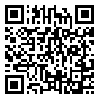Volume 78, Issue 7 (October 2020)
Tehran Univ Med J 2020, 78(7): 442-447 |
Back to browse issues page
Download citation:
BibTeX | RIS | EndNote | Medlars | ProCite | Reference Manager | RefWorks
Send citation to:



BibTeX | RIS | EndNote | Medlars | ProCite | Reference Manager | RefWorks
Send citation to:
Sadat A, Otadi K, Fakhari Z, Nakhostin Ansari N, Bagheri H, Ghorbanpour A. The effects of dry needling on flexibility & electrophysiological indices in healthy men with hamstring tightness: double-blind, randomized, placebo-controlled trial. Tehran Univ Med J 2020; 78 (7) :442-447
URL: http://tumj.tums.ac.ir/article-1-10664-en.html
URL: http://tumj.tums.ac.ir/article-1-10664-en.html
Aref Sadat1 
 , Khadijeh Otadi1
, Khadijeh Otadi1 
 , Zahra Fakhari *
, Zahra Fakhari * 
 1, Noureddin Nakhostin Ansari1
1, Noureddin Nakhostin Ansari1 
 , Hossein Bagheri1
, Hossein Bagheri1 
 , Arsalan Ghorbanpour1
, Arsalan Ghorbanpour1 


 , Khadijeh Otadi1
, Khadijeh Otadi1 
 , Zahra Fakhari *
, Zahra Fakhari * 
 1, Noureddin Nakhostin Ansari1
1, Noureddin Nakhostin Ansari1 
 , Hossein Bagheri1
, Hossein Bagheri1 
 , Arsalan Ghorbanpour1
, Arsalan Ghorbanpour1 

1- Department of Physiotherapy, School of Rehabilitation, Tehran University of Medical Sciences, Tehran, Iran.
Abstract: (1655 Views)
|
|
Background: Studies have shown that 75% of men and 35% of women over the age of 10 have hamstring tightness. Hamstring tightness is one of the major causes of hamstring injury and loss of function. Dry needling which is a common intervention used by physiotherapists for the treatment of common various conditions can improve hamstring flexibility in less time than other interventions. So, the present study aimed to investigate the effect of dry needling on flexibility and electrophysiological indices in healthy men with hamstring tightness.
Methods: In this two-way blind clinical trial with a control group, which was performed from November 2018 to February 2019 in the laboratory of the Faculty of Rehabilitation of Tehran University of Medical Sciences, 30 healthy men with hamstring tightness were randomly divided into two groups of dry needling (n=15) and sham needle (n=15). In both groups, dry needling and sham needle, three points of hamstring muscle were needled, each point for one minute during a single session. Outcome measures included flexibility based on passive knee extension test, H-reflex latency, and motor neuron excitability, which were measured three times: before the intervention, immediately after the intervention, and one week after the intervention.
Results: The results revealed that the mean of passive knee extension test (P=0.54), the mean delay time of H-reflex (P=0.84) and the mean of excitability of the motor neuron (P=0.41) didn’t have significant different between two groups after intervention.
Conclusion: The findings of this study showed that dry needling had no effect on hamstring flexibility and electrophysiological indices recorded in the soleus muscle of healthy individuals with hamstring tightness.
Methods: In this two-way blind clinical trial with a control group, which was performed from November 2018 to February 2019 in the laboratory of the Faculty of Rehabilitation of Tehran University of Medical Sciences, 30 healthy men with hamstring tightness were randomly divided into two groups of dry needling (n=15) and sham needle (n=15). In both groups, dry needling and sham needle, three points of hamstring muscle were needled, each point for one minute during a single session. Outcome measures included flexibility based on passive knee extension test, H-reflex latency, and motor neuron excitability, which were measured three times: before the intervention, immediately after the intervention, and one week after the intervention.
Results: The results revealed that the mean of passive knee extension test (P=0.54), the mean delay time of H-reflex (P=0.84) and the mean of excitability of the motor neuron (P=0.41) didn’t have significant different between two groups after intervention.
Conclusion: The findings of this study showed that dry needling had no effect on hamstring flexibility and electrophysiological indices recorded in the soleus muscle of healthy individuals with hamstring tightness.
Type of Study: Original Article |
| Rights and permissions | |
 |
This work is licensed under a Creative Commons Attribution-NonCommercial 4.0 International License. |



